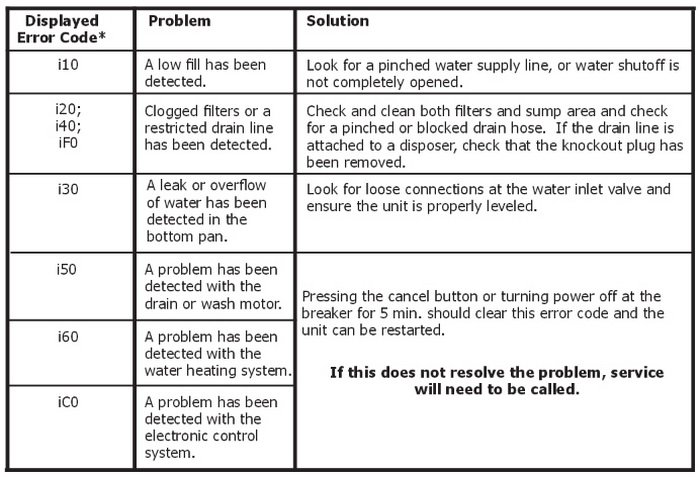
In simple terms, the E1 error code on a Frigidaire dishwasher usually indicates a problem related to the unit not filling with water. Think of it like trying to fill a glass of water when the tap isn’t turned on. It might be caused by various issues, such as a faulty water inlet valve, low water pressure, or even a kink in the hose. The big question is whether pressing the reset button will magically solve the problem. Spoiler alert: sometimes it does, but not always.
Understanding the E1 Error Code
Before diving into solutions, it’s crucial to understand what you’re dealing with. The E1 error code is a signal from your dishwasher about a filling issue. Imagine your dishwasher is having a conversation with you, trying to tell you it can’t get enough water to perform its job. This isn’t a one-size-fits-all problem, and it can stem from several root causes.
One common reason for this error is a malfunctioning water inlet valve. Think of this valve as a gatekeeper that controls how much water flows into the dishwasher. If it’s stuck or broken, the water can’t get through, much like a pinched straw. Other times, the issue might be as simple as low water pressure in your home, akin to a weak showerhead that just doesn’t have enough oomph.
Sometimes, the problem might even be external. Ever had a kinked garden hose that just won’t let water flow? The same can happen with the hose connecting to your dishwasher. Even debris or leftover food particles can clog the internal systems, preventing the machine from working correctly. Once you understand these possible causes, you can better assess whether a reset is enough or if deeper inspection is needed.
When and How to Reset Your Dishwasher
Resetting your dishwasher might seem like a magic trick—it can sometimes clear the error code and get your appliance running smoothly again. Think of it like rebooting your computer when it starts acting up. It won’t fix underlying issues but can clear out temporary glitches or errors in the system.
To reset a Frigidaire dishwasher, you typically need to press and hold down the cancel button for about 3 seconds, which will initiate a drain cycle and clear the current program. It’s like hitting the refresh button, and it might solve your problem if the error was a temporary glitch. After the drain cycle completes, try starting your dishwasher again to see if the error reappears.
However, resetting isn’t a guaranteed fix. If the E1 error persists, it’s an indication that there might be a more complex issue that requires further attention. In that case, you might want to inspect other elements like the water inlet valve or even reach out to a professional.
Dealing with Persistent E1 Errors
If resetting doesn’t do the trick, it’s time to roll up your sleeves and investigate further. First on the list should be the water inlet valve. This valve might be clogged or defective, preventing water from entering the dishwasher. If you’re comfortable with DIY repairs, you can check the valve for debris or replace it if necessary, much like changing a light bulb that’s burned out.
Another area to inspect is the water hose. Ensure it’s free from kinks or bends, allowing water to flow freely. Picture this as straightening out a tangled hose to get a smooth water flow. Additionally, checking your home’s water pressure can be beneficial. Sometimes, the problem lies not within the appliance, but in household plumbing.
In some cases, the error could be the result of a malfunctioning float assembly, which is responsible for detecting the water level inside the dishwasher. If it’s stuck, the washer might not recognize when it has enough water to operate. Whatever the cause, if DIY attempts don’t resolve the issue, contacting a professional technician might be the best next step.
Preventing Future Error Codes
To avoid running into the E1 error in the future, regular maintenance is key. Consider periodically checking the water inlet valve and hoses to ensure everything is in order. Clean your dishwasher regularly to prevent the buildup of food particles and debris, which can cause clogs and other issues.
It’s also wise to monitor your home’s water pressure. If you notice any significant changes, it could impact not only your dishwasher but other appliances as well. This proactive approach can save you a lot of hassle and keep your dishwasher running smoothly.
In conclusion, while resetting your Frigidaire dishwasher might fix an E1 error temporarily, understanding the underlying causes and performing regular maintenance is crucial for keeping your appliance in top shape. If you feel out of your depth, don’t hesitate to call in the professionals. After all, peace of mind is worth a little extra help.